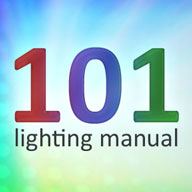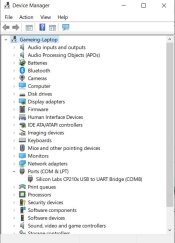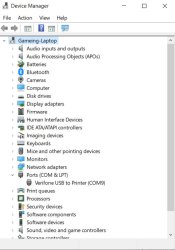everettdale
Apprentice elf
- Joined
- Nov 18, 2022
- Messages
- 66
First off, I want to thank everyone who helped me with my struggles with what should have been a simple task. So...
Thanks everyone who helped!
Take a peek at this thread to see all that if you like, but I'll summarize it here.
I want to use a WT32-eth01 to run some standalone props with Xlights. Which should be totally doable, and I got a lot of help on how to do this. And it should have been a simple matter of connecting the WT32-eth01 to my computer via a USB-to-TTL module that costs about $6.00, and load WLED onto it from the WLED install site.
This is where the problems started. It seems that some of the USB-to-TTL modules that are offered on Amazon have chips on them that have been flashed with the incorrect VID/PID. This causes them to be unreadable by the device drivers you need in order to connect to the WT32. For whatever reason (I suspect pirated or counterfeit chips) they are flashed with the VID/PID that makes your computer see them as a "verifone to printer" device instead of the proper "cp2010x USB UART bridge" that it should be, see the images. And there is nothing you can do with these incorrectly flashed modules. Except return them.
I bought different modules from different venders and all of them, 5 in total, were incorrect. So my guess is that these venders are getting either the modules, or the chips from the same supplier, and that supplier has bad chips and just doesn't realize it. Again this is just a guess.
My solution was to buy this from Adafruit. My reasoning was that if they sent me a bad module at least I could contact them and resolve the problem. The Module i got from them worked perfectly. When I plugged it in it came up as a USB to UART just as it should have and I was able to connect the WT32 to it and install Wled (ethernet) with no problems.
Anyway. Thanks again for everyone that helped me out. This is an awesome community! Hopefully this little update might help someone else who comes across this weird problem.
-everett
Thanks everyone who helped!
Take a peek at this thread to see all that if you like, but I'll summarize it here.
I want to use a WT32-eth01 to run some standalone props with Xlights. Which should be totally doable, and I got a lot of help on how to do this. And it should have been a simple matter of connecting the WT32-eth01 to my computer via a USB-to-TTL module that costs about $6.00, and load WLED onto it from the WLED install site.
This is where the problems started. It seems that some of the USB-to-TTL modules that are offered on Amazon have chips on them that have been flashed with the incorrect VID/PID. This causes them to be unreadable by the device drivers you need in order to connect to the WT32. For whatever reason (I suspect pirated or counterfeit chips) they are flashed with the VID/PID that makes your computer see them as a "verifone to printer" device instead of the proper "cp2010x USB UART bridge" that it should be, see the images. And there is nothing you can do with these incorrectly flashed modules. Except return them.
I bought different modules from different venders and all of them, 5 in total, were incorrect. So my guess is that these venders are getting either the modules, or the chips from the same supplier, and that supplier has bad chips and just doesn't realize it. Again this is just a guess.
My solution was to buy this from Adafruit. My reasoning was that if they sent me a bad module at least I could contact them and resolve the problem. The Module i got from them worked perfectly. When I plugged it in it came up as a USB to UART just as it should have and I was able to connect the WT32 to it and install Wled (ethernet) with no problems.
Anyway. Thanks again for everyone that helped me out. This is an awesome community! Hopefully this little update might help someone else who comes across this weird problem.
-everett



